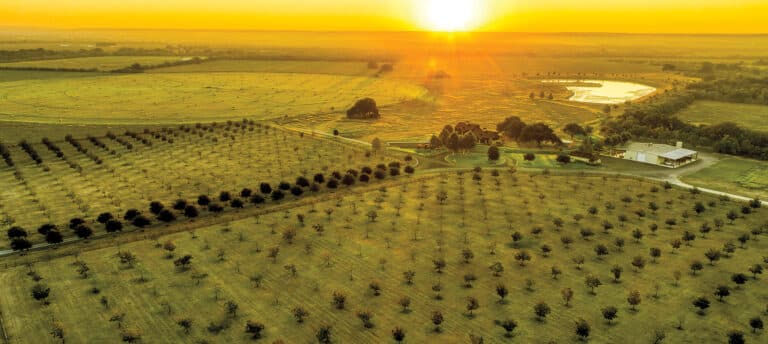The Texas Wildlife Association Foundation exists to fund the Texas Wildlife Association’s education and outreach efforts. Last year, through the organization’s Conservation Legacy, which includes Learning Across New Dimensions in Science (L.A.N.D.S) and Hunting Heritage, staff and volunteers reached more than 600,000 Texans. (See “By the Numbers” at the end of this article for the impact.) But to amplify the organization’s formal programs, members also take on conservation education on their own.
TWA members Dan and Ruth Flournoy, who live in Houston and ranch near San Angelo, hatched an idea that left the students at Irion County Elementary School in Mertzon aflutter over monarchs—and conservation.
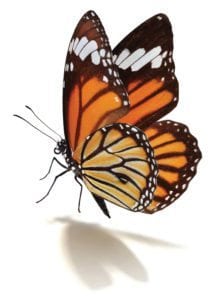
Monarch populations and children’s connections to nature are declining at alarming rates,” Dan, a TWA director and Life Member, said. “Ruth and I began to consider how we might address both issues.”
The answer, which turned out to be an extended unit on butterfly biology that culminated with a “pep rally” for monarchs and a multi-bed hilltop butterfly garden, resulted from a perfect storm of people and opportunities.
“To get this going, we just had to connect the dots between people with a passion for children, education and conservation,” Dan said.
Initially, Dan discussed the idea with Irion County’s Game Warden Justin Jackson, whose wife Alexis is the science teacher for fourth–sixth grades at Irion County Elementary.
“Justin came home and said, ‘A landowner I work with wants to do some hands-on conservation with the school. You interested?’” Alexis said. “I jumped on the chance because there’s nothing that I like better than getting our students outdoors and getting their hands in the dirt.”
Read more: Where to See the Monarch Butterfly Migration
Dan and Alexis talked and e-mailed off and on for a year putting the pieces of a plan in place and building their team, which grew to include Steve Lewis, owner of Native Ornamentals Nursery in Mertzon. Knowing that success comes from dividing and conquering, they divvied up the responsibilities: Alexis acted as the liaison with the school and coordinated the pre-event education effort; Dan and Ruth underwrote the event’s cost and planned the morning program; Lewis grew the necessary plants, which numbered almost 1,000 and included a “take-home” milkweed plant for every student; and Justin handled “other duties as assigned.”
The fact that the school had already installed beds in anticipation of an outdoor gardening project was key to the project’s implementation. The Tom Green County Master Gardeners provided a $500 grant for supplies; the eighth grade ag. class built and installed the retaining boxes, while the local 4-H Club provided the soil and the labor to fill the boxes. The gardens’ final use hadn’t been determined when Alexis approached the school administration with the idea of butterfly gardens.
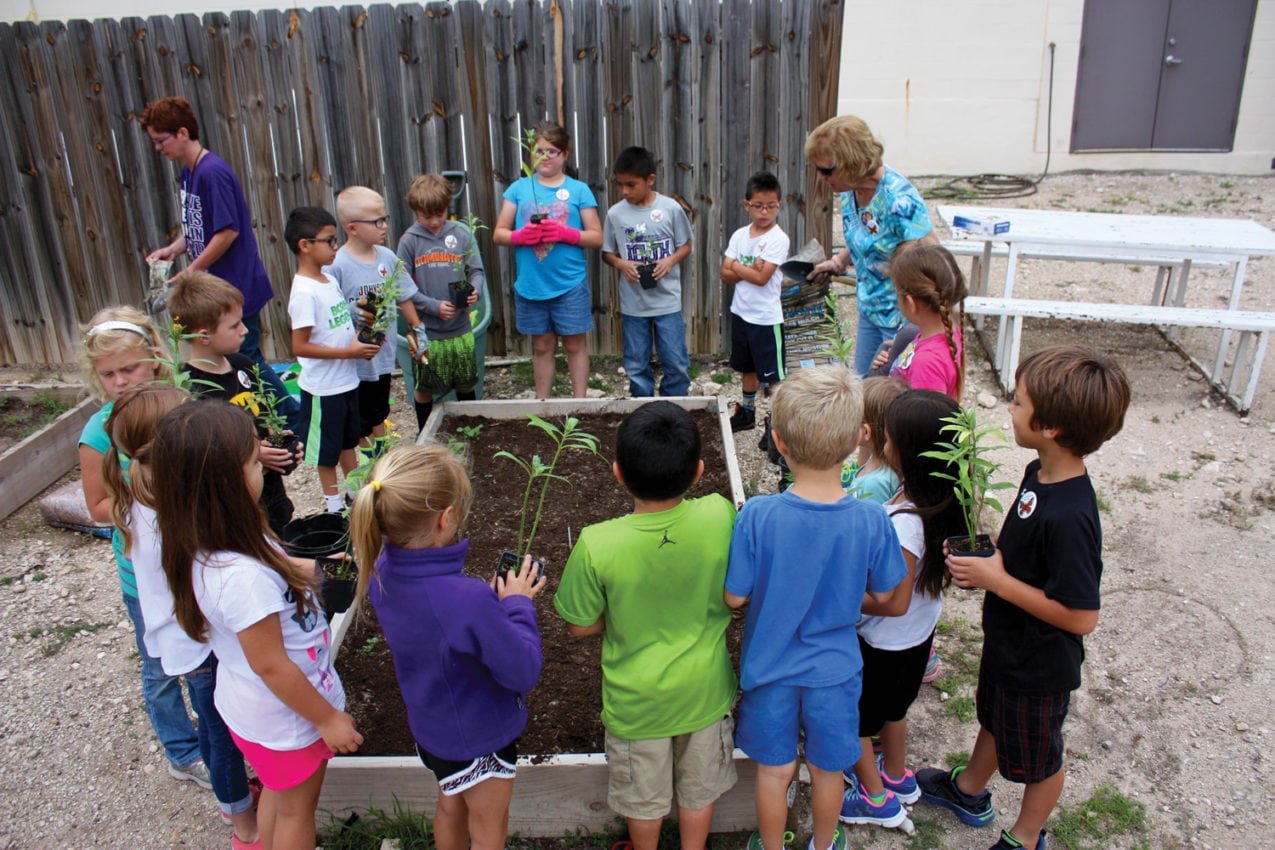
“We had empty gardens on the school grounds that were just waiting for plants,” Alexis said. “Having these in place was crucial because when Dan asked me, ‘Do you have somewhere suitable for planting?’ I could answer yes.”
According to Alexis the project came together without a major hitch.
“It wasn’t hard,” she said. “Our administration and our teachers were on-board immediately. Everyone else on the team was passionate about the project, so there was never any concern about people doing their respective parts. From the beginning, it was all about the kids and conservation.”
Milkweed for Monarchs
The team determined the best time for the Milkweed for Monarchs morning was the last week of school, so on May 23, 2016 every student and teacher in first–sixth grades gathered in the school courtyard, a caliche hilltop dotted with empty raised beds.
Unseasonal cloud cover and a cool breeze combined to make a perfect morning for being outdoors. The excitement was palpable. It was like being a visitor inside a beehive.
“My number one fear was that the students wouldn’t focus or want to participate,” Alexis said. “This generation doesn’t plant plants, they play video games and watch TV.”
Her fears were unfounded. With the panache of a seasoned ringmaster, Dan drew them in. When the question was asked, “Why did the silly student throw the butter out of the window?” The students responded to the time-worn joke with laughter and a collective groan as they answered, “To watch the butterfly.”
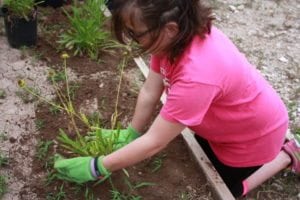
Instead of a one-sided lecture, Dan opted for interactive Q&As, demonstrations and created a showcase for students to share what they had learned about butterflies. Student after student took the microphone and explained nuances of the monarch’s life cycle, its habitat requirements, and even the physical differences between the monarchs and their look-alike counterparts, the viceroys.
The volume rose to a high-pitch as Dan led them in a responsive chant. “Why are we here?” he asked. “Milkweed for monarchs,” they responded thunderously.
The seriousness of humans’ roles as conservationists didn’t get lost in the fun-filled atmosphere. When Lewis took the microphone to reiterate the basics of the monarch’s life cycle and the importance of diverse vegetation to the species, he made it crystal clear that the morning’s activities were vital.
“We’re planting milkweed today for our own survival,” Lewis said. “Habitat is disappearing. When habitat disappears so do butterflies, birds, animals and people.”
Armed with instructions, each class received plants to transplant in their pre-assigned gardens. Some were milkweeds and others were flowering plants that could sustain adult butterflies. The primary goal was creating a nourishing rest stop for the monarchs that pass through the Concho Valley on their twice annual migration. It had secondary benefits.
“The butterfly garden is a perfect complement to the vegetable garden we maintain on campus,” Alexis said. “It gives our teachers another location—and another reason—to get their students out of the classroom into a natural learning environment.”
Because teachers embraced the well-orchestrated plan, there was laughter, chatter and teamwork instead of chaos as the planting began. Students of every age were busy doing their part for monarchs. Dan, Ruth, Steve, Justin and Alexis walked throughout the grounds lending additional assistance when needed.
Ruth, who prefers to work behind the scenes, was grinning from ear to ear as she observed, “This is what nature does for kids. This is what hands-on conservation education does for learning. This is what it’s all about.”
Dan concurred, “Today we connected kids with the basis of life. As landowners, we need to plant the seeds of conservation and stewardship everywhere we can every time we can.
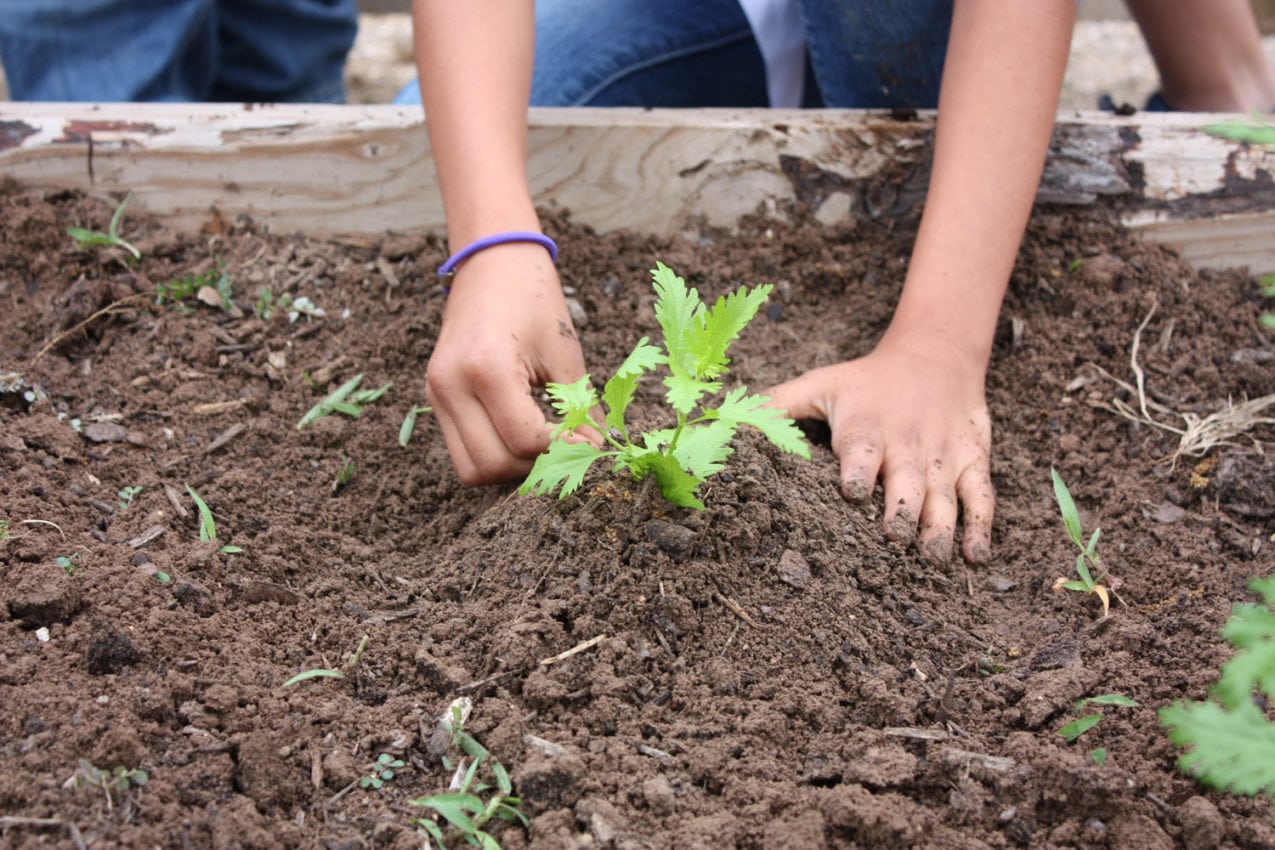
Monarch status report
The students at Irion County Elementary aren’t the only ones aflutter over monarchs; the butterflies regularly claim a spot in headlines and policy discussions. I touched base with Dr. Ben Hutchins, an invertebrate biologist who heads up TPWD’s Monarch Response Team, to get an update on the iconic species.
TWA: What has happened to monarch populations that has put them in the spotlight?
BH: While scientists knew that monarchs migrated for decades, it was about 40 years ago that it was discovered the monarchs overwintered in a localized area near Mexico City. This discovery changed everything. Scientists began monitoring the population by measuring the total area where the species overwintered.
Since the winter of 1994–1995, the monarchs’ overall population has dropped precipitously. Two years ago, the area inhabited by the overwintering monarchs dropped to about one acre, which was a 90 percent decline. It sent alarm bells throughout the scientific community. It has since rebounded slightly back to the 80 percent decline which has been the most constant trend.
TWA: What is the status of the species’ potential listing as an endangered species?
BH: In 2014, the USFWS received a petition asking that the monarch be designated as a threatened species, which put the butterfly on the federal radar. It’s important to note that the monarchs’ decline coincided with a decline of other native pollinators, primarily managed honey bees as well as native bees.
USFWS reviewed the request and determined it had merit. Currently, the request is undergoing the required “12-month review,” but USFWS is drastically behind because of the number of petitions for listing various species and the attendant legal challenges. Federal staff estimates that they won’t have a final decision on the monarchs until sometime in 2019.
The good news is that it gives us some time to take management action and hopefully stabilize the population, which could render any discussion of listing unnecessary.
TWA: Why is Texas “ground zero” in the effort to stabilize monarch populations?
BH: If you look at the migratory pathway, Texas acts a funnel to and from Mexico. When the butterflies are flowing north, Texas is the center of the first generation. Texas is where they breed and the first generation of caterpillars grows to maturity. That first generation is the “seed stock” for the next three generations that will populate the area from the Rocky Mountains to the Atlantic Ocean and north into Canada.

When the Methusaleh generation, the one that lives the longest, heads south for the winter, Texas is a crucial energy resupply station for the final leg into Mexico. Plants that bloom in early to late fall are a vital component to a successful migration for the generation that will overwinter and then begin the migration north the following spring. If there aren’t enough flowering plants, fewer members of the Methusaleh generation reach the overwintering grounds and those who do make it are often in a weakened state making it less likely they will survive the winter.
TWA: What can Texas landowners do to help?
BH: To help monarchs, landowners should maintain or restore native prairies, grasslands and savannas that historically covered much of Texas, manage their land for maximum vegetative diversity and use herbicides and insecticides as judiciously as possible. The good news is that the native rangeland and the land management techniques that benefit wildlife species also benefit native pollinators.
TWA: Where can landowners find additional information about monarch conservation?
BH: Start by googling “TPWD and monarchs.” This will take you directly to the agency’s monarch page where you’ll find a variety of resources including our “Management Recommendations for Native Pollinators in Texas,” the “Texas Monarch and Native Pollinator Conservation Plan” and USFW’s Pollinator Fact Sheets.
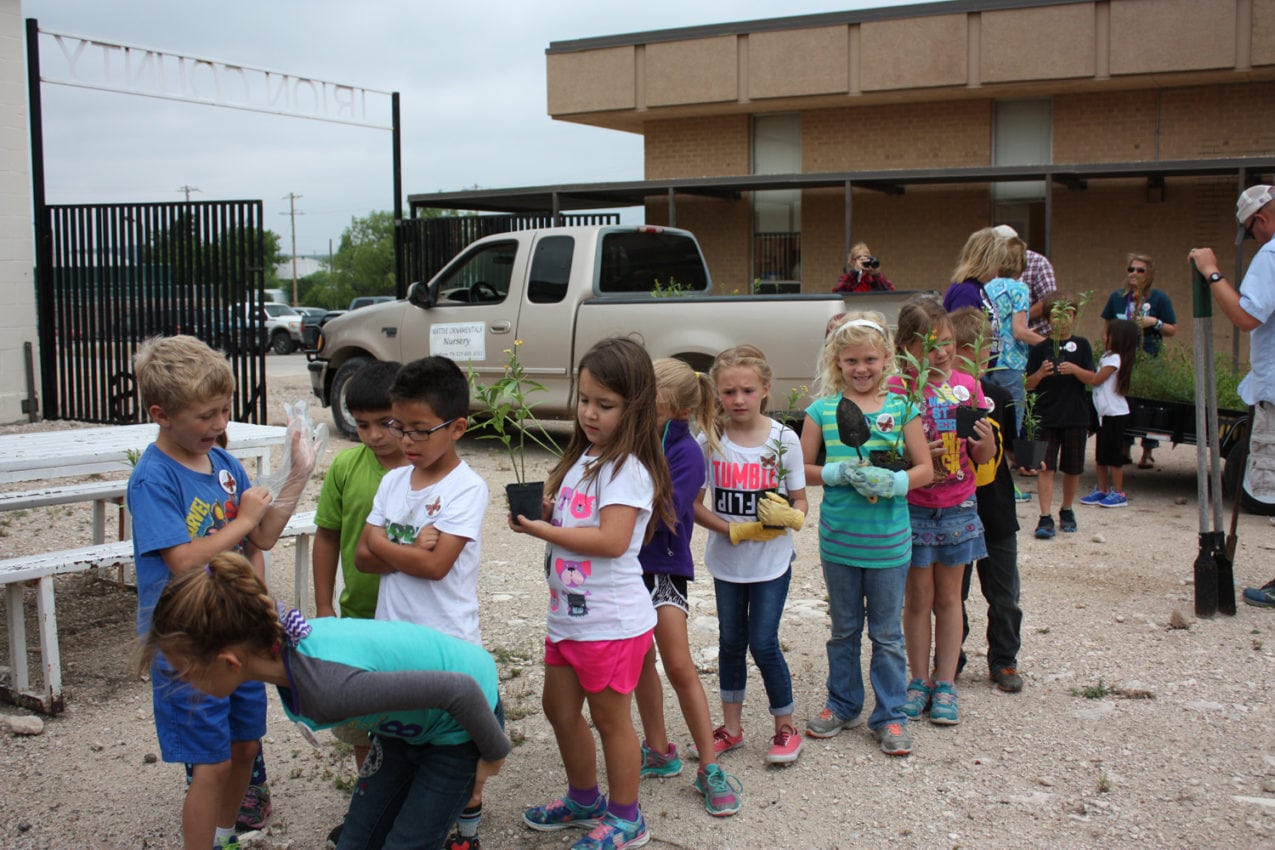
Pollinator management = Wildlife valuation
In May 2016, the Texas Parks & Wildlife Department published management guidelines for pollinators that landowners can use to qualify for wildlife tax valuation. The guidelines outline a suite of different practices that benefit pollinators ranging from butterflies to bees, the most efficient and proficient pollinators on the landscape. The practices, which can be applied to small backyards and large ranches, include prescribed burning, native plant re-seeding and installing native pollinator plots to create nest sites. To download a copy of the guidelines, go www.tpwd.texas.gov and search for “Management Recommendations for Native Insect Pollinators in Texas.” Before embarking on the management plan, landowners should consult with their local tax appraisal district to ensure their efforts will be acceptable.
By the Numbers: A Summary of Conservation Legacy’s Impact
Critter Connections Distributed
192,375 | 2016
98,091 | 2017 (thru June)
Public Events
49,769 people | 2016
70,854 people | 2017 (thru June)
Wildlife By Design
Classroom Presentations
87,861 people | 2016
50,251 people | 2017 (thru June)
Distance Learning
On-Demand Webinars + Videoconferences
73,579 people | 2016
52,786 people | 2017 (thru June)
Teacher Workshops
37 workshops | 2016
39 workshops | 2017
L.A.N.D.S. Intensive
Trinity River Project, Necroposy in a Box, L.A.N.D.S Intensive Yearlong
17,987 people | 2016
14,351 people | 2017 (to date)
Adult Education*
Wildlife For Lunch Webinars
566 | 2016 (live)
278 | 2017 (live/to date)
3,815 | 2017 (archived)
Webisodes
11,660 | 2017 (to date)
3,650 | 2017 (archived)
*In addition to digital outreach, TWA hosts field days, seminars and conferences.



